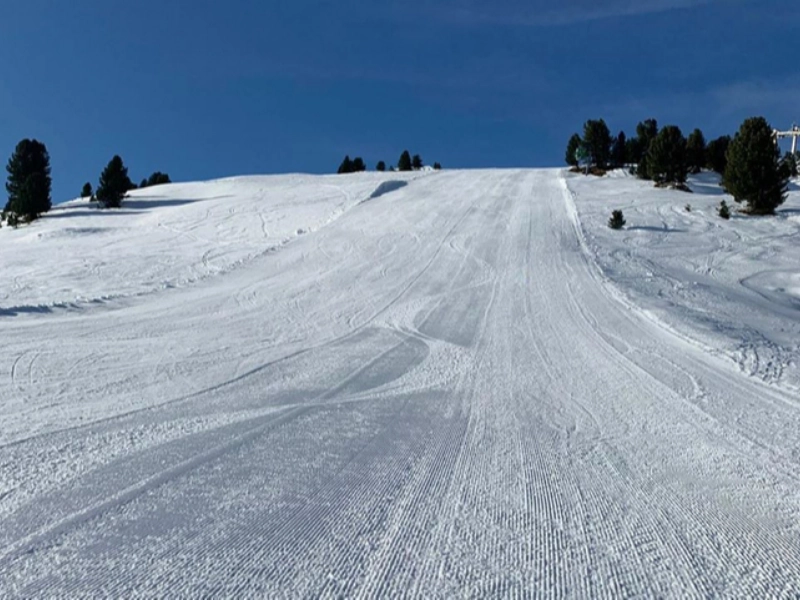Learning Short Turns and Increasing Your Skiing Agility
You need to be able to move your lower body separately from your torso in order to skim short turns. This calls for a high level of coordination, which takes time and practice to achieve. This ability is comparable to jumping on a trampoline in that it requires contracting and extending the legs in order to receive and release energy.
Beat

Division of the Upper and Lower Bodies
 A careful blend of strength, speed, balance, and coordination are needed for skiing. Agility will be impacted by any one of these areas that is weak.
Skiers with advanced skills may change course and shape at will, maintaining excellent upper body stability even over uneven terrain and at high speeds. This ability is a sign of advanced skiing and is essentially what makes pros different from novices.
Technical and performance skiing require lateral separation in order to provide greater angles between the torso and legs in a side-to-side plane of motion. More outside ski pressure throughout the turn is made possible by this, improving steering and speed control.
Initiating a turn by twisting at the shoulders or hips is a common technique among skiers. While this can be useful, it is more efficient to achieve rotational separation earlier in the movement. The hockey stop drill is a fantastic workout to help with this.
A careful blend of strength, speed, balance, and coordination are needed for skiing. Agility will be impacted by any one of these areas that is weak.
Skiers with advanced skills may change course and shape at will, maintaining excellent upper body stability even over uneven terrain and at high speeds. This ability is a sign of advanced skiing and is essentially what makes pros different from novices.
Technical and performance skiing require lateral separation in order to provide greater angles between the torso and legs in a side-to-side plane of motion. More outside ski pressure throughout the turn is made possible by this, improving steering and speed control.
Initiating a turn by twisting at the shoulders or hips is a common technique among skiers. While this can be useful, it is more efficient to achieve rotational separation earlier in the movement. The hockey stop drill is a fantastic workout to help with this.
Edge Modification
 Skiing the short turn is a fast-paced technique that requires accurate and quick body movements. Understanding how the many components of a turn interact with one another and how to adjust your position from one turn to the next is essential to skiing this technique.
The key to a successful short turn is to develop a strong and steady outside ski dominance, which can only be achieved by flexing or shortening your inner leg (also known as shortening your hips). With a progressive angulation from the pelvis and upper body, this movement builds up outside ski pressure and permits the inside leg to 'fall' into the next turn.
This 'falling' into the new turn is also aided by the lower leg and foot. To help 'lock' in the new edge, the inside leg must shorten concurrently with its extension into the new turn.
Skiing the short turn is a fast-paced technique that requires accurate and quick body movements. Understanding how the many components of a turn interact with one another and how to adjust your position from one turn to the next is essential to skiing this technique.
The key to a successful short turn is to develop a strong and steady outside ski dominance, which can only be achieved by flexing or shortening your inner leg (also known as shortening your hips). With a progressive angulation from the pelvis and upper body, this movement builds up outside ski pressure and permits the inside leg to 'fall' into the next turn.
This 'falling' into the new turn is also aided by the lower leg and foot. To help 'lock' in the new edge, the inside leg must shorten concurrently with its extension into the new turn.
Pole Positioning
 It's crucial to plant the pole at the precise moment when you're ready to shift forward to start a new turn. By doing this, you guarantee that your lower body will be able to take control and find equilibrium over the skis' edges. This will also guarantee that your upper body stays as motionless as possible and doesn't disrupt the skier's lower body movement rhythm.
Gaining a grasp of this part of the movement is one of the key technical aims for any coach, as many young racers overlook this crucial feature. The wrist and forearm are aligned and fixed by the time the pole tip contacts the snow, as seen in Amodt's example frame 3, and the entire arm functions as a single unit to start the movement of the legs into the new curve. In a similar vein, it's critical to refrain from making the usual mistake of dragging your hands to the side. You will become weaker and lose your rhythm as a result.
It's crucial to plant the pole at the precise moment when you're ready to shift forward to start a new turn. By doing this, you guarantee that your lower body will be able to take control and find equilibrium over the skis' edges. This will also guarantee that your upper body stays as motionless as possible and doesn't disrupt the skier's lower body movement rhythm.
Gaining a grasp of this part of the movement is one of the key technical aims for any coach, as many young racers overlook this crucial feature. The wrist and forearm are aligned and fixed by the time the pole tip contacts the snow, as seen in Amodt's example frame 3, and the entire arm functions as a single unit to start the movement of the legs into the new curve. In a similar vein, it's critical to refrain from making the usual mistake of dragging your hands to the side. You will become weaker and lose your rhythm as a result.








